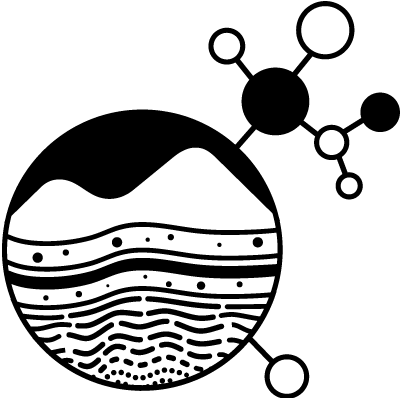SESAR Vocabularies
This page contains the controlled or recommended vocabularies used for select SESAR² metadata fields. Controlled lists are marked with an asterisk (*).
See the SESAR Quick Guide for the complete list of SESAR metadata fields and their definitions.
If you have questions about metadata content, please contact the SESAR Curator at info@geosamples.org.
Registration Metadata
Sample Type (Object) *
SESAR registers specimens and related sampling features collected from the natural environment.
- Core – long cylindrical cores
- Core Catcher – material recovered from the core catcher of a sedimentary core and which is treated as a separate section from the core.
- Core Half Round – half-cylindrical products of along-axis split of a whole round
- Core Piece – material occurring between unambiguous [as curated] breaks in recovery.
- Core Quarter Round – quarter-cylindrical products of along-axis split of a half round.
- Core Section – arbitrarily cut segments of a “core”
- Core Section Half – half-cylindrical products of along-axis split of a section or its component fragments through a selected diameter.
- Core Slab – rectangular prism of material taken from a core where one dimension is significantly shorter than the others.
- Core Sub-Piece – unambiguously mated portion of a larger piece noted for curatorial management of the material.
- Core U-Channel – long rectangular prism of material for continuous measurement.
- Core Whole Round – cylindrical segments of core or core section material.
- CTD – a CTD (Conductivity, Temperature, and Depth) cast sample.
- Cuttings – loose, coarse, unconsolidated material suspended in drilling fluid.
- Dredge – a group of rocks collected by dragging a dredge along the seafloor.
- Experimental Specimen– a synthetic material used during an experiment
- Grab – a sample (sometimes mechanically collected) from a deposit or area, not intended to be representative of the deposit or area.
- Hole – hole cavity and walls surrounding that cavity.
- Individual Sample – a sample that is an individual unit, including rock hand samples, a biological specimen, or a bottle of fluid.
- Oriented Core – core that can be positioned on the surface in the same way that it was arranged in the borehole before extraction.
- Other – a sample that does not fit any of the existing type designations. It is expected that further detailed description of the particular sample will be provided.
- Rock Powder – a sample created from pulverizing a rock to powder.
- Site – a place where a sample is collected.
- Terrestrial Section – a sample of a section of the near-surface Earth, generally in the critical zone.
Is your sample not in the list?
If you would like to register a sample type that is not listed above, please contact info@geosamples.org.
Material *
Material that the sample consists of “Rock”, “Mineral”, “Liquid>aqueous”
- Biology
- Gas
- Ice
- Liquid>aqueous
- Liquid>organic
- Mineral
- NotApplicable
- Organic Material
- Other
- Particulate
- Plant Structure
- Rock
- Sediment
- Soil
- Synthetic
Descriptive Metadata
Sub-Object Type*
If the object type for a sample is Individual Sample or Experimental Specimen, users may elect to enter a sub-object type.
Individual Sample
- Bead– Bead pressed from a powder.
- Chemical Fraction- Parts of a parent sample separated chemically.
- Cube- Equidimensional prism of material.
- Culture- Biological material cultured in geological material.
- Cylinder- Cylinders of material.
- Gas- A gaseous material.
- Liquid- A liquid material.
- Mechanical Fraction- Parts of a parent sample separated mechanically.
- Powder- Fine-grained (<62 micron), dry, granular material.
- Slab- Rectangular prism of material where one dimension is significantly shorter than the others.
- Smear- A toothpick sample suspended in liquid and fixed on slide.
- Specimen- Material of any shape or form selected for specific characteristics of interest.
- Squeeze Cake- Solid fraction remaining after forced expulsion of interstitial fluids from a source sample; typically has the shape of a cylindrical disc.
- Thin Section- A sub-millimeter thick slice of material mounted on a glass slide.
- Toothpick- Minute amount of material taken for observation.
- Wedge- Sample form factor named for the tool used to extract it. Typically 5-20 ml in volume.
Experimental Specimen
- Thin Section
- Other
Classification (Biology) *
Formal categorization of sample.
- Macrobiology
- Macrobiology>Coral
- Microbiology
Biology classifications are under review. If you would like to take part in the discussion, contact info@geosamples.org.
Collection Method
Method by which a sample was collected.
- Blasting
- Camera SledCamera tow
- Coring
- Coring>BoxCorer
- Coring>CameraMounted
- Coring>DrillCorer
- Coring>FreeFallCorer
- Coring>GravityCorer
- Coring>GravityCorer>Giant
- Coring>GravityCorer>Pilot
- Coring>HandHeldCorer
- Coring>KastenlotCorer
- Coring>MultiCorer
- Coring>PistonCorer
- Coring>PistonCorer>Giant
- Coring>RockCorer
- Coring>SideSaddleCorer
- Coring>SubmersibleMountedCorer
- Coring>TriggerWeightCorer
- Coring>VibratingCorer
- Dredging
- Dredging>Chain Bag
- Dredging>ChainBagDredge
- Experimental Apparatus
- Grab
- Grab>HOV
- Grab>ROV
- Manual
- Manual>Hammer
- Probe
- Sediment trap
- Suspended sediment
- Unknown
Age Unit
Must be one of the following.
- years (yr)
- thousand years (Ka)
- million years (Ma)
- billion years (Ga)
- Anno Domini (AD)
- Common Era (CE)
Navigation Type*
We follow the MGDS Navigation Type list.
- ACOUSTIC_RANGING/GPS
- DGPS
- DVL
- DVL:Renav
- DVL:Renav:Confirmed
- DVL/LBL
- DVL/LBL:Renav
- DVL/LBL:Renav:Confirmed
- DVL/LBL/INS
- DVL/USBL
- DVL/USBL:Renav
- GLONASS
- GPS
- GPS:Assumed
- GPS/WireOut
- LAYBACK
- LAYBACK/LBL
- LBL
- Locale
- LORAN
- NotApplicable
- NotProvided
- RTK GPS
- USBL
Physiographic feature
Type of physical feature that your sample was collected from
- abyssal feature
- alluvial fan
- anticline
- aquifer
- arch (natural formation)
- arroyo
- badlands
- bank (hydrographic)
- bar (physiographic)
- basin
- bay
- beach
- bight
- canyon
- cape
- cave
- channel
- cirque
- cliff
- continental divide
- continental margin
- crater
- delta
- drainage basin
- drumlin
- dune
- earthquake feature
- estuary
- fault
- fault zone
- flat
- floodplain
- fold (geologic)
- fracture zone
- gap
- gulf
- gut
- hydrothermal vent
- ice mass
- isthmus
- karst area
- lake
- lava field
- ledge
- massif
- mesa
- mineral deposit area
- moraine
- mountain
- mountain range
- mountain summit
- ocean trench
- outcrop
- plain
- plateau
- playa
- reef
- ridge
- rift zone
- roadcut
- seamount
- sea
- stream
- submarine canyon
- syncline
- thermal feature
- valley
- volcano
Platform and Launch types
Type of platform for the cruise.
- AUV
- Ship
- HOV
- ROV
- Small craft
- Submersible / HOV

